Alimoche, wise coach
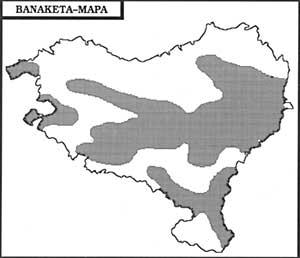
When we talk about cowhide birds, there are people who bend at the end, but you can't deny that vultures and gorgeous similar flyers have a special appeal. With open wings, his ease of swimming on the air currents provoked by the heat of the sun surprises us and as he keeps looking with envy to climb in the sky.
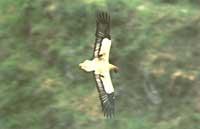
The alimoche is the smallest of the palearchic vultures, with a length of 58-70 cm and a wing width of 145-165 cm, and its weight ranges between 1.6 and 2.5 kg. They are migrants in themselves, and after the winter in tropical Africa, they arrive in Euskal Herria in early March, with the aim of denying there and growing the Alimoche.
During spring and summer, decorate the skies of our mountains with their elegant flights and special profiles. In fact, the alimoche is easily separable from the rest of raptors. It is of medium size, with the tail in the shape of a wedge and highlights the bright clothing formed by white and black feathers to mix with others. On the other hand, the skin of the naked yellow face, and the thin and hooked beak, are also special if you can see from quite close.
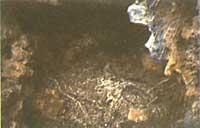
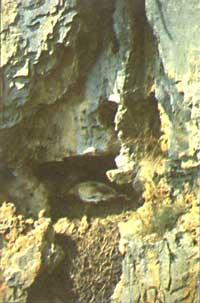
But in addition to its attractive appearance, the Alimoche offers many other curiosities in its forms of life and customs. As for food, the alimoche is mostly a coachman, but its character is much more opportunistic than that of vultures, so it can often be hunter, fisherman, egg thief or coprofago (devourer). She loves ample places to find food and does not usually approach the edges of the jungle. For this reason, it is frequent to see the white vulture in the pastures in which the cattle are fed, eating excrements, looking for small invertebrates in the dejections, or on the edges of the road in the remains of animals killed by the cars. On the other hand, you can catch lizards, lizards or others, small mammals and birds to complete your diet. As an example of this last case J. L. L. G. G. Grand mentions the attack of a white vulture on a kestrel nest and the capture of one of the adults and two chickens.
However, the most remarkable feature of the feeding of the white vulture, and which has been the cause of the annexation of the wise alimoche, is the particular behavior of this amazing bird to steal the eggs, that is, the white vulture is one of the few birds that use tools. In Africa it has been observed that the white vulture, as the eggs lie, throws them against a great stone, breaks the shell and eats them. However, when you find eggs as big and hard as those of the ostrich (Struthio camelus), carefully choose a stone and throw it on the egg again and again, until it breaks the shell and reaches the rich food inside. This peculiar practice has become a classic problem among ethologists and today, while some authors argue that it is a learned behavior, others consider that congenital factors have more importance.
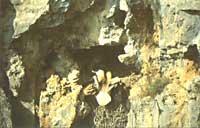
This eccentric bird shows a curious attitude to the killings. Most of the time she is the first, along with the strings and ravens, to find the tomb, but at that time she does not approach sweet food, and she usually goes around in search of chomorras or other shattering. In this way he leaves after a short time and will not return until his giant cousins arrive, the saiak. Then, when the vultures open the massacre and begin to eat, it is dedicated to looking for the crumbs that fall to the ground like a crazy chicken. On the one hand, it can be said that this activity is normal, because the fine peak of the white vulture is not enough to break the leather of the big animals, so it can take advantage of the shade of the most powerful vultures, but it seems that the white vulture uses a similar behavior with the smaller and soft animals, and in this case the reason should be different. It can be said that this discreet bird is mistrustful of the corpses, and that it prefers, in case, that the cousins send them ahead.
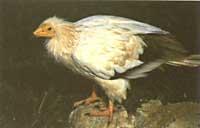
The nidification alimoche can opt for habitats of very different typology, from the level of the sea to an altitude of almost 2.000 m, as long as there are rocks or walls suitable for this work. In these cases, choose appropriate bullets or holes, where it accumulates all kinds of materials. A nest used every year can be between 70 and 150 cm in diameter and between 20 and 70 cm in height, in which you can find sticks, animal hairs, pieces of fabric, strings, etc. In fact, in recent years the alimoche has become accustomed to go to landfills, where in addition to food has found abundant new material for nidification. In one of the nests analyzed by Nerea, in addition to those already mentioned, one could see an old sock, some compresses, newspaper papers, wires, and eleven other supplies. At the end of March or beginning of April the female lays the eggs. They are usually two, whitish and granulated, and their measurements are an average of 65x50 mm, with an approximate weight of 90 grams.
The jacket is made between the male and the female, and the chickens will be born in 42 days. In them normally only the elder will fly when the other dies. During the 75-80 days that Chito will perform in the nest, his feeding, cleaning and care fall on both parents. By mid-August, the success will have a plumage and will be linked to the first flight attempts. At this time, the profile of the young white vulture is very similar to that of their parents, but their plumage is extremely brown, very similar to that of young mammals, but, of course, the alimoche is much smaller than the bearded vultures. At the end of September, with his parents, the young Alimoche must begin his journey to tropical Africa, and if he is able to keep this test he will know for the first time the future territories of his winter.
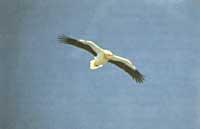
As for its distribution, the Alimoche lives in southern Europe, Africa and Asia. It seems that throughout the last century there has been a sharp decline throughout Europe, while the current continental population is around 2,500 couples, 2,000 of them located in the Iberian peninsula. It seems that this decline is mainly due to the decline of livestock and the placement of poisoned baits for carnivores.
As for the estimates made in the Basque Country, it can be said that its population is located around 190 pairs, of which 140 are located in Navarre, and it seems that despite the decline of the last decades, at present this population remains quite stable.
TECHNICAL SHEET: ALIMOCHE |
SPECIES : Neophron percnopterus FAMILY : ORDER ACCIPITRIDAE : FALCONIFORM CLASS : BIRDS |
Buletina
Bidali zure helbide elektronikoa eta jaso asteroko buletina zure sarrera-ontzian











